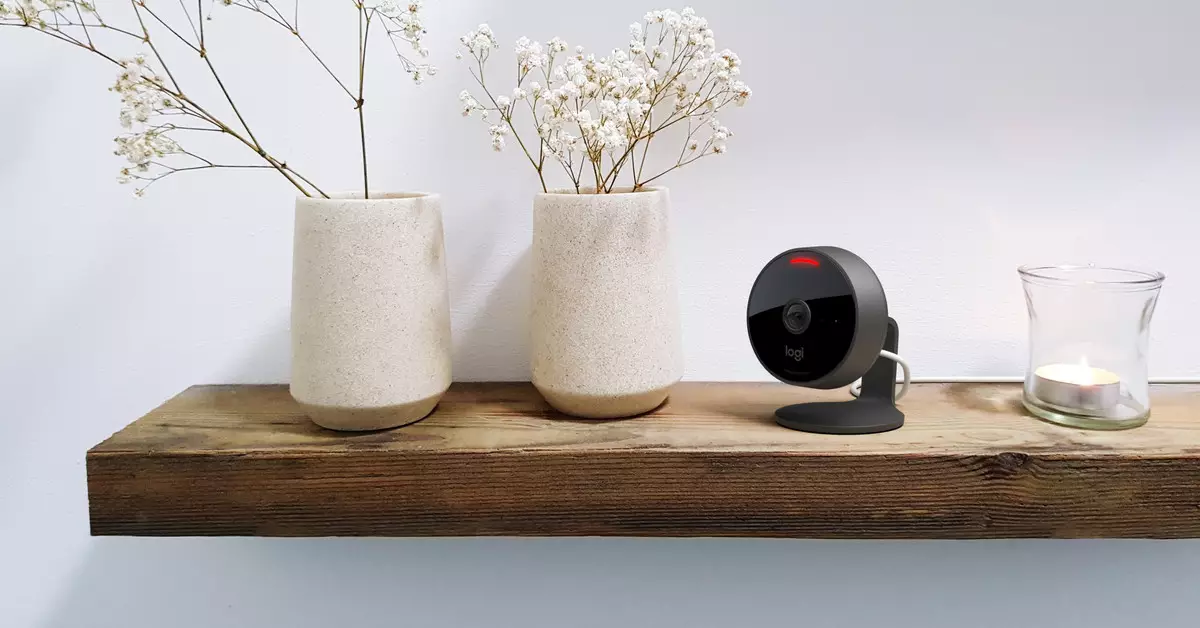In the realm of smart home technology, no brand carries the same clout as Apple. Renowned for its dedicated ecosystem and innovative solutions, Apple appears poised to launch its smart security camera—an addition that could redefine user experience within the smart home landscape. With major industry players like Amazon and Google already firmly entrenched, the question arises: will Apple’s entrance into smart security be more than just another device?
Apple’s decision to leap into the smart security camera segment, expected to materialize in 2026 according to supply chain analyst Ming-Chi Kuo, taps into a rapidly growing market. The projected production of over 10 million units annually suggests a calculated approach, aiming to capture significant market share and consumer interest. The rise in demand for smart security devices is evident, as homeowners increasingly prioritize safety and convenience.
However, Apple’s late arrival invites scrutiny. For years, the company has largely served as a software facilitator supporting third-party devices rather than directly competing with established brands like Ring and Arlo. As these competitors adopt advanced capabilities—like Amazon’s recent AI search features—it remains to be seen how Apple’s product will not just compete but potentially innovate within this sphere.
A major hallmark of Apple’s strategy is seamless integration within its ecosystem. Kuo notes that the forthcoming security camera will be “designed to integrate seamlessly with other Apple hardware products via wireless connectivity.” This suggests that an Apple security camera would function optimally when paired with devices such as the HomePod or Apple TV, which could serve as hubs for monitoring and recording.
The idea of ecosystem lock-in is critical. Consumers already vested in Apple’s hardware might feel more compelled to use the smart security camera to enhance their home automation experience. This synergy could render it challenging for users of non-Apple devices to incorporate this new offering without also investing in additional Apple products, thereby reinforcing customer loyalty and expanding Apple’s user base.
Among the most exciting possibilities is the rumored integration of Apple’s AI technologies within the smart security camera. The current landscape is marked by the incorporation of generative AI features that provide contextual awareness, allowing cameras not merely to serve as surveillance tools but comprehensive smart home systems.
For instance, systems that can recognize familiar faces, detect package deliveries, or differentiate between people and pets represent a significant leap forward in security tech. Apple’s approach might involve leveraging its existing frameworks, such as Apple Intelligence and Siri, to provide a user-friendly interface for homeowners enabling them to not just surveil their property, but actively manage their home environment.
Another compelling aspect of Apple’s venture into smart security involves the financial implications of subscription services. Current offerings like HomeKit Secure Video (HKSV) allow users to securely store recordings in iCloud, with subscription tiers that vary based on the number of devices connected.
This model could generate ongoing revenue in addition to the initial device sales. Current integrations with third-party cameras yield limited HKSV support, creating an opportunity for Apple to differentiate its product by providing exclusive, advanced features that enhance the value proposition for consumers. As competitors lean more into their own subscription services, Apple could see this as a revenue-generating avenue while offering consumers a unified experience.
Despite the anticipation surrounding Apple’s smart home camera, it’s intriguing that this move comes a decade after the launch of the Apple HomeKit platform. Initially designed to facilitate a cohesive smart home ecosystem, HomeKit has seen relatively slow adoption by third-party manufacturers, delaying the breadth of device choices available for consumers.
The recent development of the Matter standard could potentially bridge some of these gaps, incorporating security fixtures into the ever-evolving smart home framework. As more devices enter this ecosystem, Apple’s decision to advance its own camera could serve as a watershed moment, prompting more manufacturers to align with its standards.
As Apple gears up to release its first smart security camera in 2026, the implications of this launch span far beyond the product itself. By converging hardware, AI innovations, and subscription services into a tightly integrated ecosystem, Apple is not merely entering the smart home market; it’s attempting to reshape it. The challenge lies in achieving a balance between robust features, seamless integration, and user-Member satisfaction, allowing Apple to establish itself as the standard-bearer in this competitive landscape. Time will tell if this strategy truly pays off or if the smart home market will resist another newcomer.


Leave a Reply